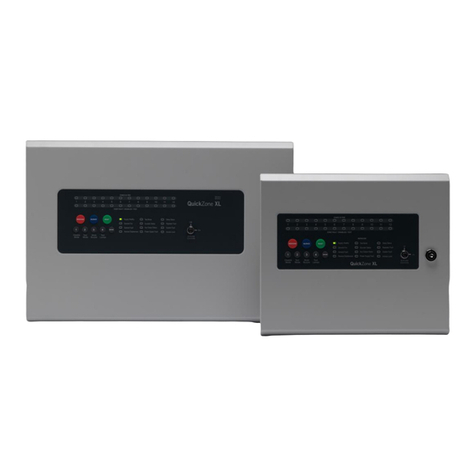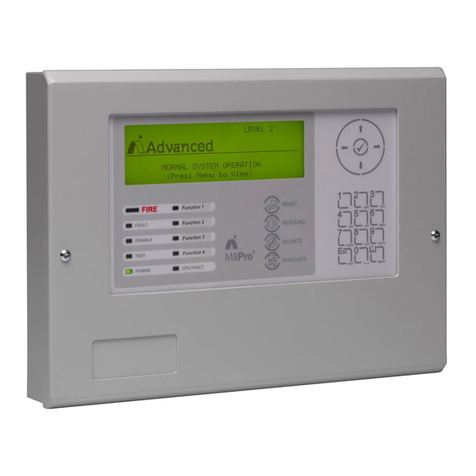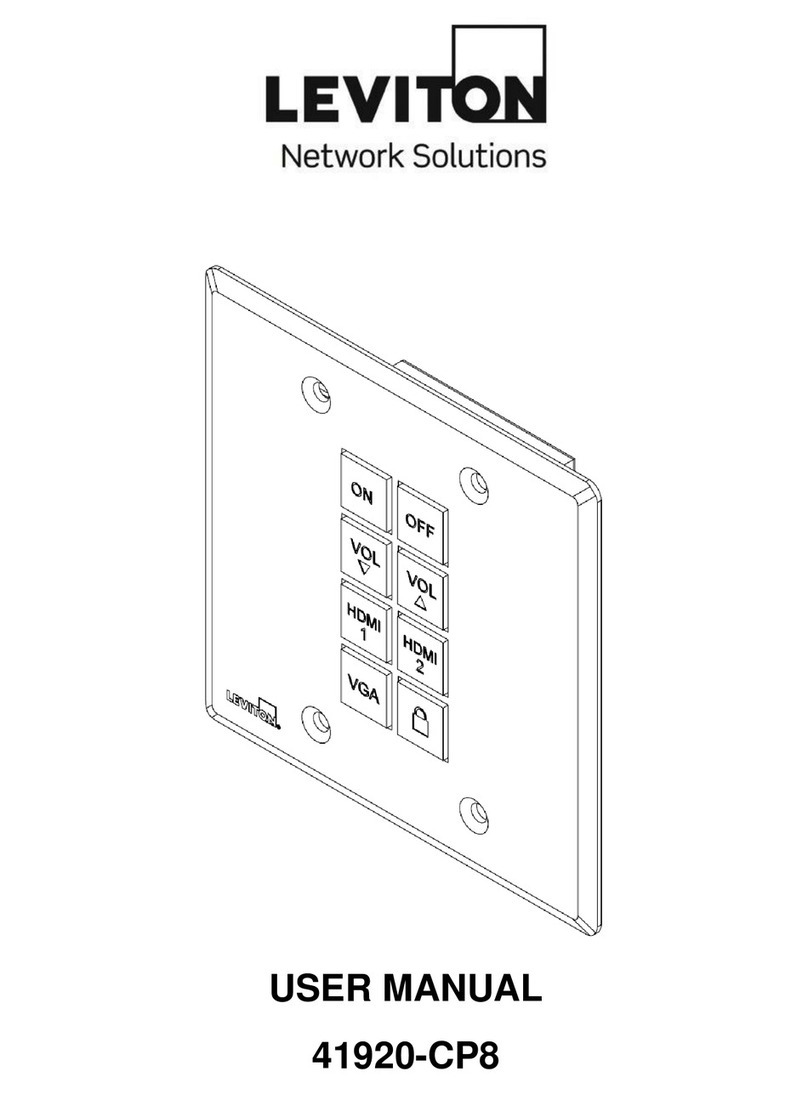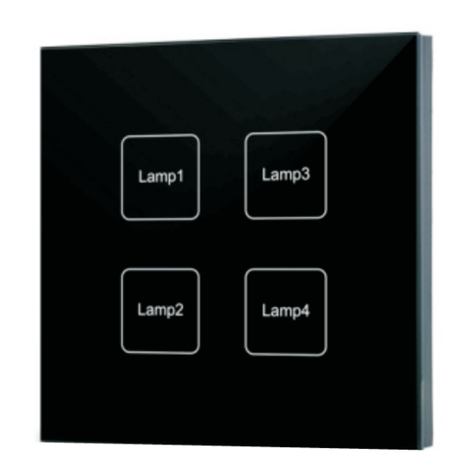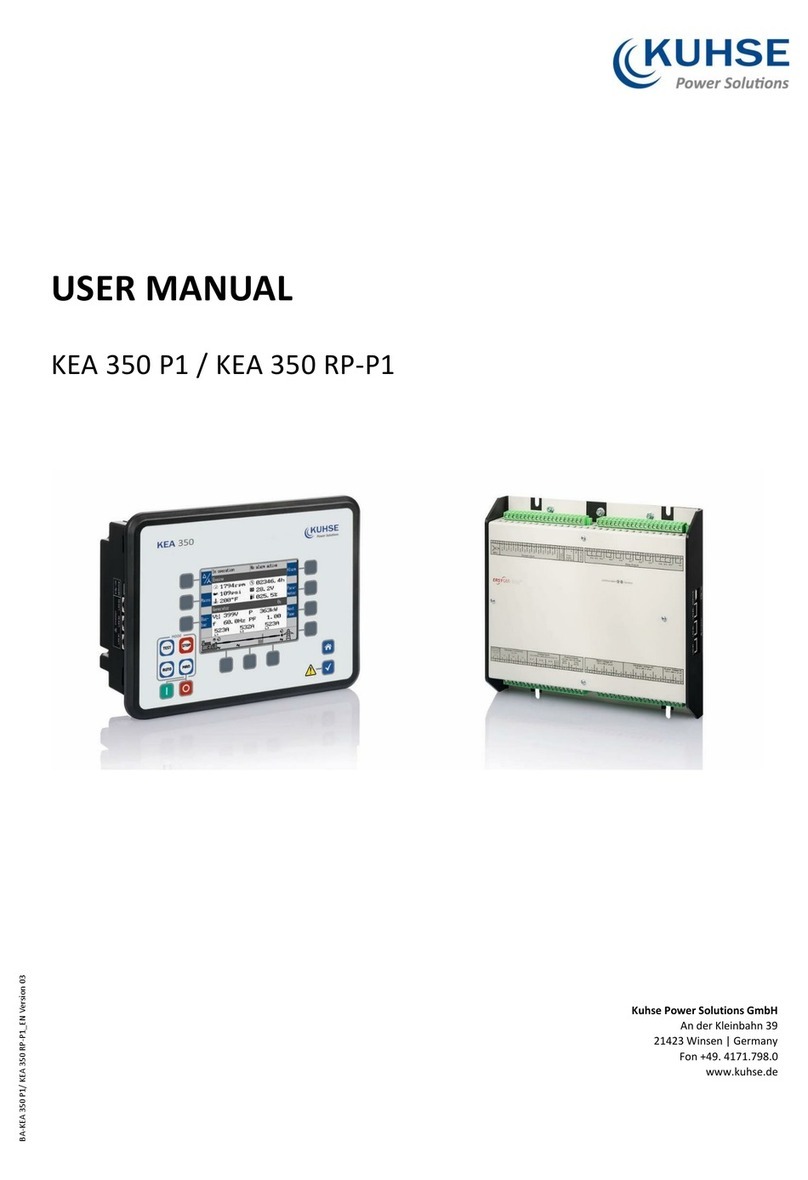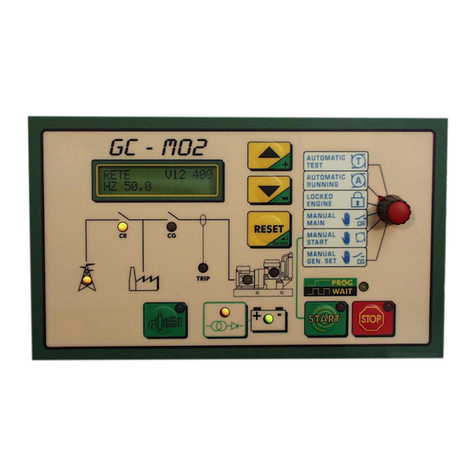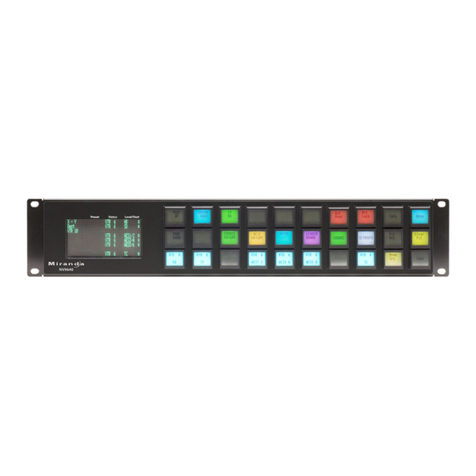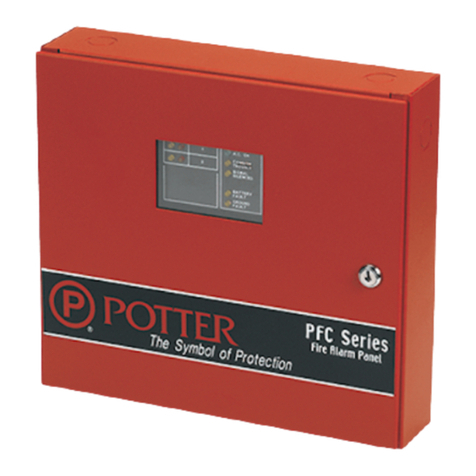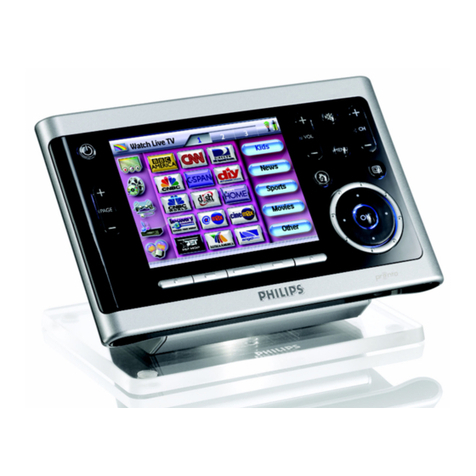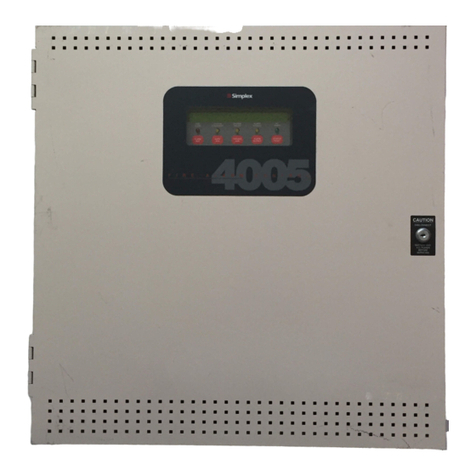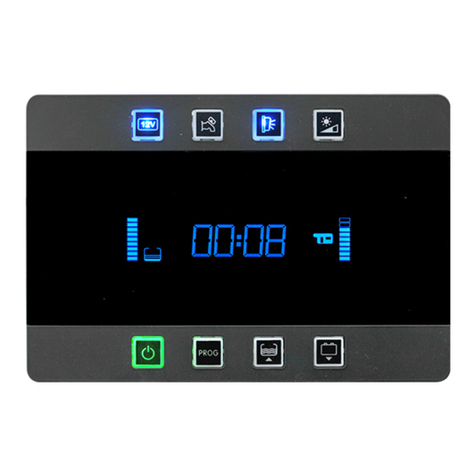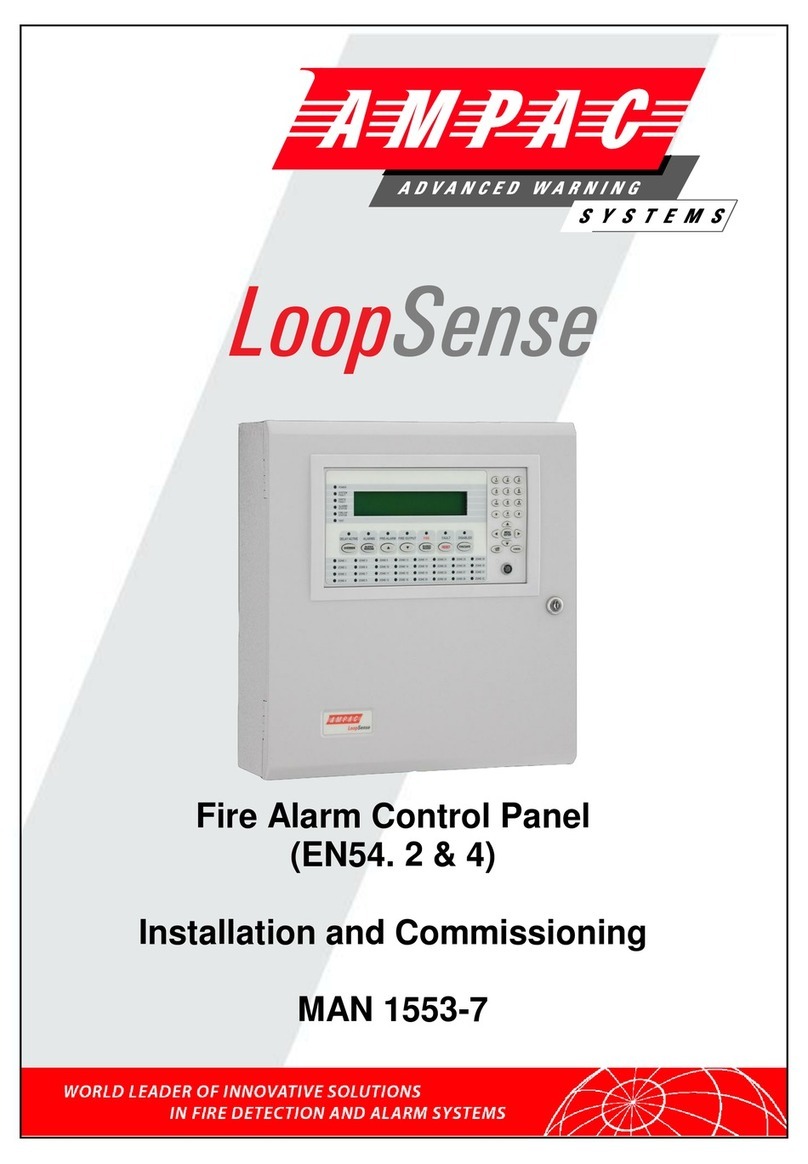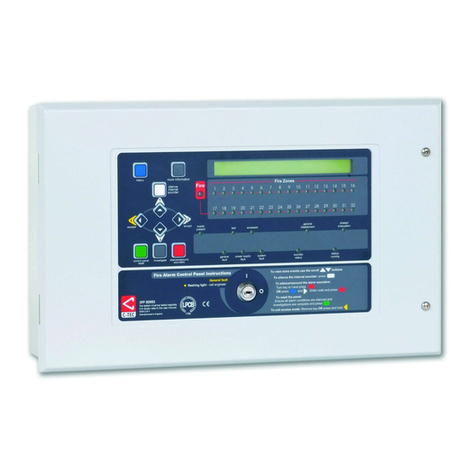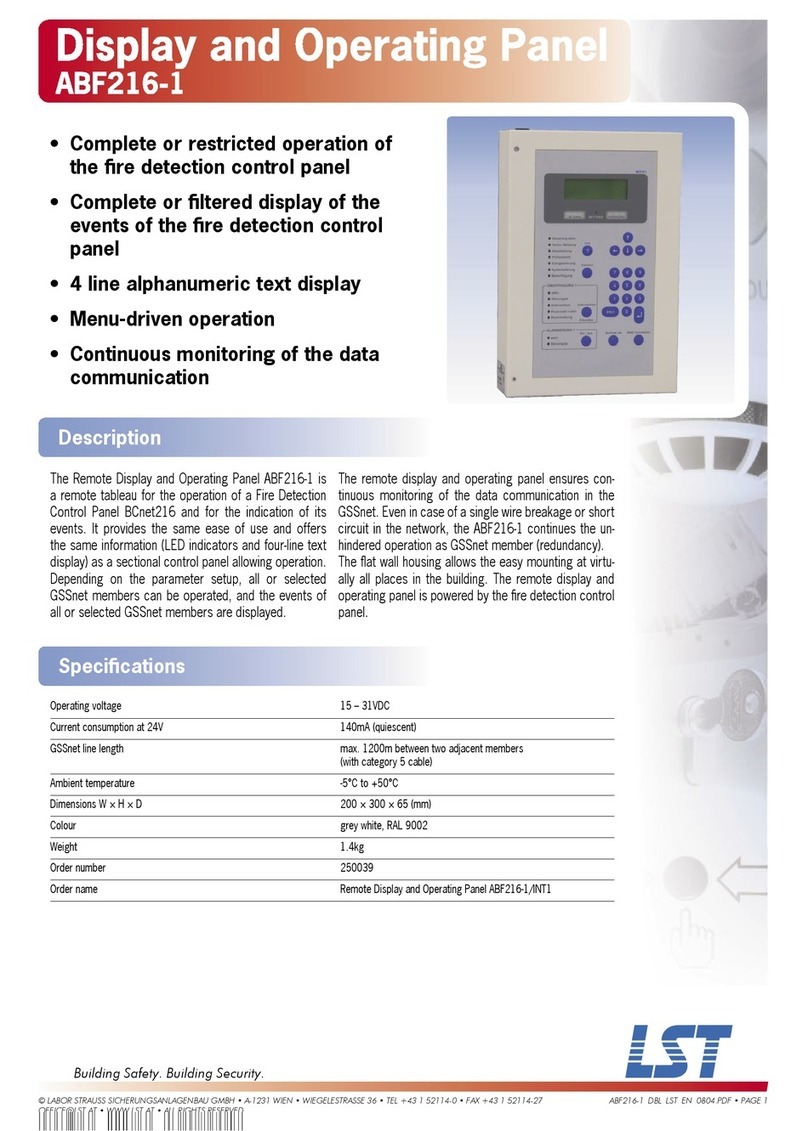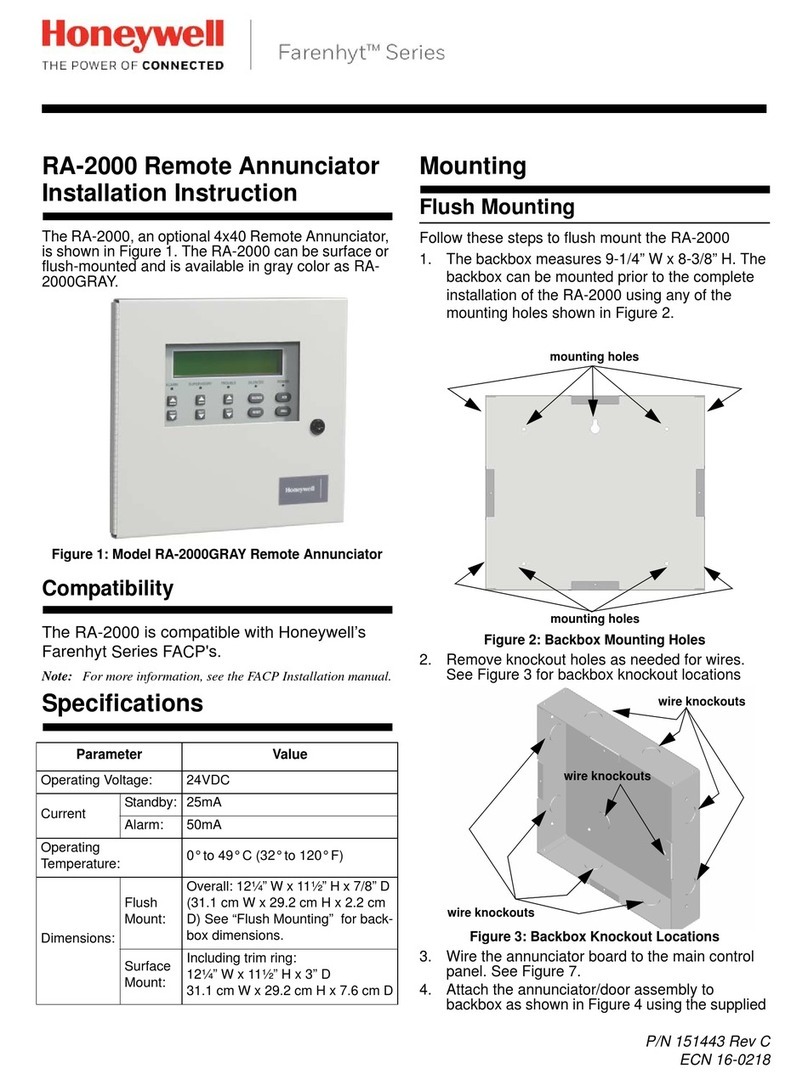Advanced MxPro 5 Installation and operating instructions

www.advancedco.com
680-167 REV 03
Apollo Devices
This document lists the Apollo devices that are compatible with the Range of Fire Alarm Control Panels.
It also highlights any specific requirements and technical information.
The operation and functions described in this manual are available from Software Version 5000-050-04 onwards.

www.advancedco.com
This page is intentionally left blank.

www.advancedco.com
1 Compatible Devices
All part numbers are Apollo numbers unless indicated otherwise.
Item
Description
Comments
SW
Detection
58000-300
Carbon Monoxide Detector
58000-400
Heat Detector
58000-500
Ionization Smoke Detector
58000-600
Optical Smoke Detector
58000-700
Multi-Sensor Detector
58100-908
Manual Call Point with Isolator
EN54-11 Type A
58100-950
Manual Call Point (Weatherproof)
EN54-11 Type A
58100-951
Manual Call Point with Isolator (Weatherproof)
EN54-11 Type A
58000-305
Multi-Sensor Detector (CO, Heat)
050-04
58200-908
Manual Call Point with Isolator
EN54-11 Type A
58200-950
Manual Call Point (Weatherproof)
EN54-11 Type A
58200-951
Manual Call Point with Isolator (Weatherproof)
EN54-11 Type A
Detection
55000-400/-420
Heat Detector
55000-401
Heat Detector (High Temperature)
55000-500/-520
Ionization Smoke Detector
55000-600/-620
Optical Smoke Detector
55000-885
Multi-Sensor Detector
55000-265
Beam Detector
55000-268
Beam Detector –5-50m
55000-273
Beam Detector –50-100m
55000-280
Flame Detector –Dual IR
55000-295
Flame Detector –Dual IR –Flameproof
55000-023
Flame Detector –Dual UV/IR
55100-908
Manual Call Point with Isolator
EN54-11 Type A
55100-950
Manual Call Point with Isolator (Weatherproof)
EN54-11 Type A
55200-908
Manual Call Point with Isolator
EN54-11 Type A
B30120
SeTec
Manual Call Point Red –Fire Brigade [DKM Kx Series]
EN54-11 Type B
B30110
SeTec
Manual Call Point Blue –Local Alarm [DKM Kx Series]
EN54-11 Type B
B30130
SeTec
Manual Call Point Red –House Alarm [DKM Kx Series]
EN54-11 Type B
245391
MEP
Manual Call Point Red –Fire Brigade [HM/3/32/01/01]
EN54-11 Type B
245393
MEP
Manual Call Point Blue –Local Alarm [HM/5/32/02/01]
EN54-11 Type B
Bases / Ancilaries
45681-210
XP95/DISCO mounting base –STD
45681-209
XP95/DISCO mounting base –Deep
45681-284
XP95/DISCO mounting base with isolator
45681-321
XP95/DISCO mounting base with isolator
45681-242
XP95/DISCO mounting base with relay
45681-219
XP95/DISCO mounting base with heater
53832-070
Minidisc remote indicator
53546-022
Duct Detector –use in conjunction with 55000-500, 55000-
600, 58000-500 or 58000-600 detectors

www.advancedco.com
Item
Description
Comments
SW
MPA0800
Wiesmeier
Remote Indicator
MPA0805
Wiesmeier
Remote Indicator
Intrinsic Safe Devices
55000-440
Heat Detector
55000-540
Ionization Smoke Detector
55000-640
Optical Smoke Detector
45681-215
Mounting base
55000-940
Manual Call Point
EN54-11 Type A
55000-855
Protocol translator –single channel
55000-856
Protocol translator –dual channel
29600-098
Galvanic barrier
Modules
55000-720
Isolator
45681-211
Isolator base
55000-182
Sounder control –5Amp (DIN Rail)
55000-588
3-Channel Input / Output with isolator
55000-760
Switch monitor with isolator –mini –interrupt (DIN Rail)
55000-802
Isolator–Dual (DIN Rail)
55000-803
Input / Output (DIN Rail)
55000-804
Output (DIN Rail)
55000-809
Switch monitor –mini –interrupt
55000-810
Switch monitor –mini
55000-812
Zone monitor with isolator (DIN Rail)
55000-813
Zone monitor
55000-818
Input / Output
55000-819
Output
55000-821
Switch monitor - interrupt (DIN Rail)
55000-822
Switch monitor (DIN Rail)
55000-826
Sounder controller (DIN Rail)
55000-823
Sounder controller
55000-832
Switch monitor –mini –interrupt
55000-833
Switch monitor –mini
55000-840
Switch monitor –interrupt
55000-841
Switch monitor with isolator –interrupt
55000-842
Switch monitor
55000-843
Switch monitor with isolator
55000-845
Zone monitor with isolator
55000-847
Input / Output with isolator
55000-849
Output with isolator
55000-852
Sounder controller with isolator
55000-875
Output with isolator –mains switching
Alarm Devices

www.advancedco.com
Item
Description
Comments
SW
45681-261
Sounder base
45681-277
Integrated base sounder with isolator
45681-278
Integrated base sounder
45681-279
Integrated base sounder with isolator
45681-290
Integrated base sounder with isolator –slow whoop
45681-291
Integrated base sounder –slow whoop
45681-300
Integrated base sounder with isolator –DIN tone
45681-330
Sounder / beacon base with isolator
45681-331
Sounder / beacon base
45681-332
Sounder / beacon base with isolator –slow whoop
45681-333
Beacon base with isolator
45681-334
Sounder / beacon base with isolator –DIN tone
45681-335
Beacon base
55000-001
Open area sounder –Red
55000-002
Open area sounder –White
55000-005
Open area beacon –Red
55000-006
Open area beacon –White
55000-009
Open area sounder / beacon –Red
55000-010
Open area sounder / beacon –White
55000-261
100dB Sounder –Red
55000-278
100dB Sounder –Red
55000-279
100dB Sounder –White
55000-276
100dB Sounder –Red –slow whoop
55000-277
100dB Sounder –White –slow whoop
55000-274
100dB Sounder –Red –weatherproof
55000-275
100dB Sounder –White –weatherproof
55000-291
Open area sounder / beacon –Red –Multi-tone
55000-292
Open area sounder / beacon –White –Multi-tone
55000-293
Open area sounder / beacon with isolator –Red –Multi-
tone
55000-294
Open area sounder / beacon with isolator –White –Multi-
tone
55000-296
Open area sounder / beacon –Red –Multi-tone –
weatherproof
55000-297
Open area sounder / beacon –White –Multi-tone –
weatherproof
55000-298
Open area sounder / beacon with isolator –Red –Multi-
tone –weatherproof
55000-299
Open area sounder / beacon with isolator –White –Multi-
tone –weatherproof
55000-877
Beacon –Red
55000-878
Beacon –Amber
55000-879
Beacon –Clear –Red flash
Alarm Devices
45681-393
Discovery sounder / beacon base with isolator
050-04
58000-005
Open area sounder –Red
050-04
58000-007
Open area sounder –White
050-04

www.advancedco.com
Item
Description
Comments
SW
Radio Interface Devices
XPA-IN-14007-APO
Interface Unit
XPA-CB-12034-APO
Optical Smoke Detector with mounting base
XPA-CB-13032-APO
Multi Sensor Detector with mounting base
XPA-CB-11170-APO
Heat Detector (CS) with mounting base
XPA-CB-11171-APO
Heat Detector (A1R) with mounting base
XPA-MC-14006-APO
Manual Call Point
EN54-11 Type A
XPA-CB-14001-APO
Sounder and Base (Red)
XPA-CB-14002-APO
Sounder and Base (White)
XPA-CB-14003-APO
Sounder / Beacon and Base (Red / Red Lens)
XPA-CB-14004-APO
Sounder / Beacon and Base (White / Amber Lens)
XPA-CB-14005-APO
Sounder and Base (White / Clear Lens)
S90
54000-601
Heat Detector
54000-701
Smoke Detector –Ionization
54000-801
Smoke Detector –Optical
54000-901
Manual Call Point
54000-920
Single Channel I/O Module
54000-922
Three Channel I/O Module
54000-925
Zone Monitor Module
54000-926
Single Channel Input Switch Monitor Module
54000-927
Single Channel Call Point Monitor Module
54000-928
Single Channel Sounder Control Module
54000-929
Single Channel Control Module
54000-930
Shop Monitor Module
As our policy is one of constant product improvement the right is therefore reserved to modify product specifications without prior notice

www.advancedco.com
2 Sensitivity Settings
Reference: Product Manual 680-165 Section 3.3.2.8
The following are the protocol / device specific information relating to Apollo devices.
2.1 Mode
This is applicable to Discovery devices only.
The panel fully supports the sensitivity modes within the Discovery devices. Refer to the Apollo technical
documentation for a detailed description and recommended use of these bands.
Different sensitivity modes can be chosen for both day and night periods. This field can be set in the range 1 –5.
2.2 Alarm Level
The Alarm Level is the level of the analogue value returned by the detector at which the panel will enter a Fire
Alarm Condition. The default value is 55. Setting the value higher will mean that more smoke / higher temperature
is required before the panel will enter the alarm condition. Setting the value lower will mean that less smoke /
temperature is required before the panel will enter the fire alarm condition.
The alarm level cannot be set outside the safe operating limits defined for the particular device.
Apollo Discovery devices always use a value of 55.
2.3 Minimum Level
If the detector analogue output falls below the minimum value programmed, the panel will enter a fault warning
condition. This parameter is normally left at a value of 8 for Apollo detectors.
2.4 Additional Information
Special Discovery specific features are available from the “Additional Info” field of the Loop View/Edit display. It is
then possible to view the internal Drift, perform a rapid compensation or access any of the internal Discovery
EEPROM memory locations. Press the ✔button and a pop-up window is shown presenting a list of options.
For example:
[Loop 1 Devices] <More>
Press the buttons to highlight the required menu option and then press the ✔button to confirm.
2.4.1 View Drift
The display then shows the Discovery devices that the panel is reading. For example, select the View Drift option
and the display shows:
[Loop 1 Devices] <More>
Address Additional Info
>001.0 Disco Reading..
002.0 XP95
003.0 Disco Reading..
004.0 Disco Reading..
When the reading is complete, the display shows the drift within the device. For example:
VIEW DRIFT
RAPID COMPENSATION
VIEW EEPROM

www.advancedco.com
[Loop 1 Devices] <More>
Address Additional Info
>001.0 Disco Drift = 20%
002.0 XP95
003.0 Disco Drift = 6%
004.0 Disco Drift = 3%
Refer to Apollo’s literature for a full explanation of the drift mechanism and for further information on the expected
values.
The panel will indicate a Warning Condition (Drift Detected) when the drift compensation reaches maximum (100%)
and the device can no longer compensate and maintain sensitivity levels.
The panel will indicate a Fault Condition (Device Dirty) when the drift compensation has reached maximum and the
analogue value is 35 or higher. The panel checks this condition once every 24-hours. The status will be
immediately updated if a Calibrate or Auto-Learn is performed.
2.4.2 Rapid Compensation
Apollo has incorporated a rapid compensation facility into the Discovery devices. If a device is changed during
service it can be quickly adjusted to the present ambient conditions.
Highlight the required “Disco” family device, select RAPID COMPENSATION and then press the ✔button to
confirm. The panel will now instruct this device to perform a rapid compensation. This will take approximately 30
seconds.
This operation must only be performed with the detector in clean air.
No other operation should be performed on this device during this rapid compensation period.
2.4.3 View EEPROM
The panel can read any of the extended memory locations within the Discovery devices.
Highlight any “Disco” family device, select VIEW EEPROM and then press the ✔button to confirm. The display will
prompt for entry of the required extended memory address. For example:
[Loop 1 Devices] <More>
Address Additional Info
Enter the required address using the number buttons and then press the ✔button to confirm.
The panel will now read the extended memory locations for all Discovery devices on the loop. When complete, the
display will present the information as follows:
[Loop 1 Devices] <More>
Address Additional Info
>001.0 Disco EEP[ 1] = 23
002.0 XP95
003.0 Disco EEP[ 1] = 21
004.0 Disco EEP[ 1] = 22
Refer to Apollo’s literature for an explanation of the extended memory locations and for further information on the
expected values.
EEPROM ADDRESS=#

www.advancedco.com
3 Loop Isolators
Apollo recommends a maximum of 20 detector devices (or equivalent loading) between isolators.
Note that some devices (particularly modules) are specified as representing the equivalent of two or more detector
loads.
For further information, refer to the Apollo Document on Isolators (number PP2090) and individual Apollo device
data sheets.
4 Sounder Group Addressing
The panel supports the optional “Group Address” now available on a number of the Apollo sounder type modules
and sounders.
Refer to Document 680-128 for further information.
5 Discovery Sounders
The panels support the group, volume, tone and wand test features of the Discovery sounder beacon products.
Refer to Document 680-179 for further information.
6 Loop Output Drive Capability
The following information is applicable per loop. All loops can be loaded to the maximum (500mA per loop).
Provision has been made to allow for a typical loading of detectors and inputs (30mA).
Volume
Number of Loop Powered Sounders
100db
104 Loop Powered Sounders
or
92db
57 Sounder Bases
or
85db
126 Sounder Bases
STOP
The number of devices shown is representative for specific loop arrangements. If there is a
mixture of sounder types or sounder volumes on the installation or if the other devices on
the loop take more than 30mA in quiescent or alarm, then calculate the actual current
load in alarm using the current consumption figures quoted in the device data sheets and
ensure that this does not exceed the maximum output for the loop.
Refer to Product Manual 680-165 Section 5.2.1 and to Apollo Loop Calculators for further
information on calculating loop loading, cable cross sectional area and loop distance.
7 Series 90 Devices
7.1 Working Life
Most series 90 products ceased production several years ago. However these can still be encountered in existing
buildings.
Apollo designed the Series 90 detectors for a ten-year working life. It is generally possible to determine a products
age from its serial numbers. Please contact Apollo Fire Detectors for detailed information on this subject.
The following sections give specific guidance on using Series 90 devices with the panel and other Apollo devices
on the loops.
7.2 Shop monitor
Each shop monitor has inputs for 2 conventional zones and one sounder circuit controller.
When commissioning the loops, the view/edit option represents this as a device with 3 sub-addresses e.g. if the
device is at address 75, it will be listed as: -

www.advancedco.com
Each point can be assigned to a zone and programmed with location text as required. The sounder can be
assigned to any output group and programmed as pulsing/continuous etc as with any other sounder circuit
controller.
There are a couple of items to note with this device: -
a) It is essential that zone 1 is NOT in a fire condition when an “Auto Learn” is performed (If it is and DIP switch 8 is
on, then the device will identify itself as a call point).
b) The PCB has yellow LED’s to indicate a short or open circuit on each conventional zone, but this is reported
back to the panel as a general fault. A fault on the sounder circuit wiring is also reported back to the panel as a
general fault.
7.3 Manual Call Points/Interrupts
With XP and Discovery “interrupt” devices, the panel knows the address of the device within a second of activation.
The panel then has plenty of time to recheck this to prevent against transient vibrations from giving false alarms
and still comply with the timing requirements of BS 5839.
The Series 90 devices cannot identify themselves in this manner. Therefore if 5839 response rates are required it
will be necessary to change to XP or Discovery devices.
7.4 Mixing Series 90 with XP95 and Discovery
The MX4000 range supports series 90, XP95 and Discovery devices on the same loop to allow gradual building
upgrades.
Other manuals for MxPro 5
2
Table of contents
Other Advanced Control Panel manuals
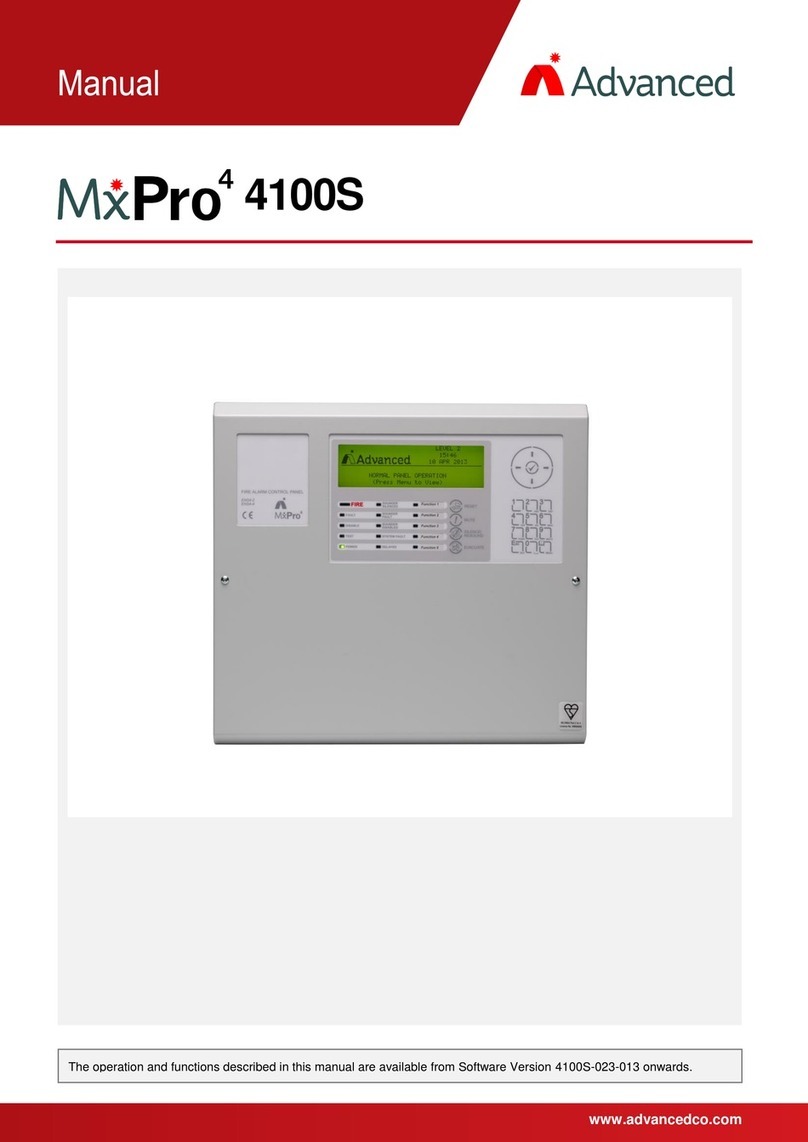
Advanced
Advanced MxPro 4 4100S User manual

Advanced
Advanced Mx-5101xR User manual
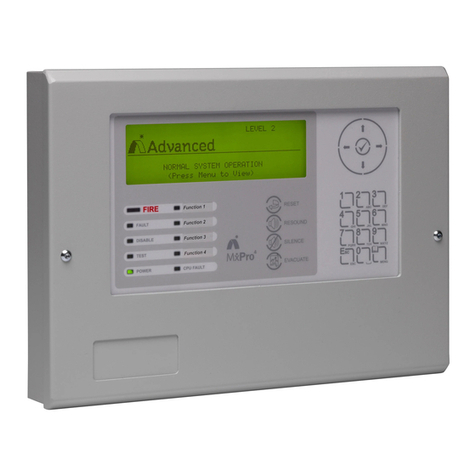
Advanced
Advanced MxPro4 Series User manual

Advanced
Advanced MxPro4 Series User manual

Advanced
Advanced ExGo Series User manual
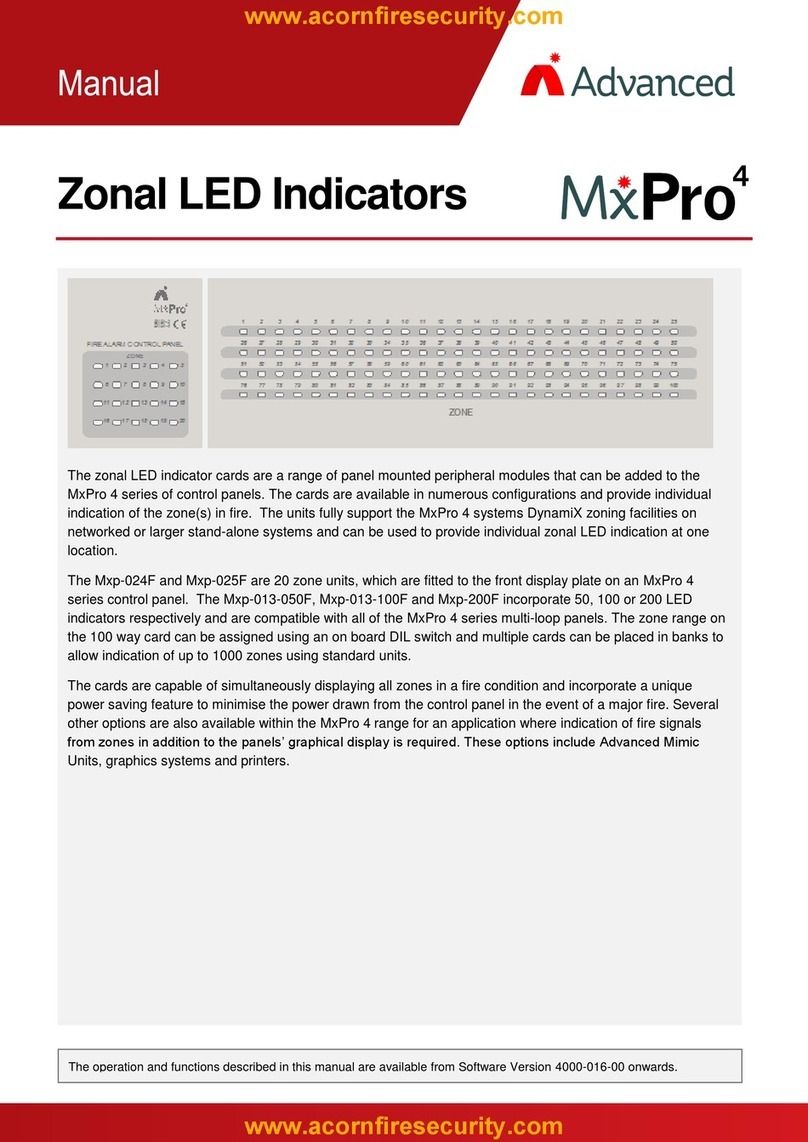
Advanced
Advanced Mx Pro 4 User manual
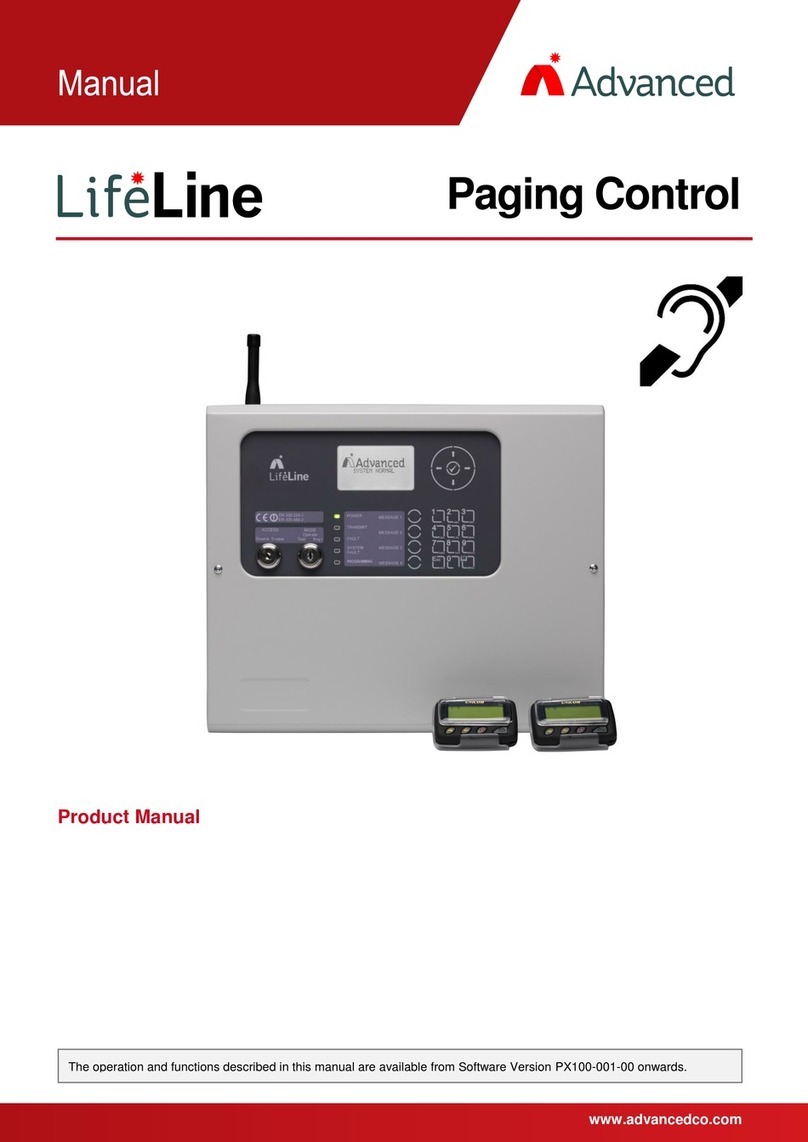
Advanced
Advanced LIFELINE Px-100 User manual
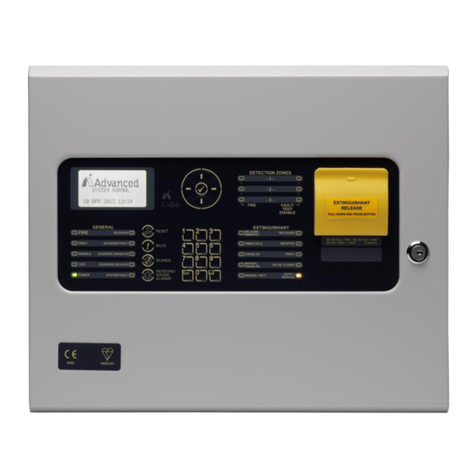
Advanced
Advanced Ex-3001 User manual
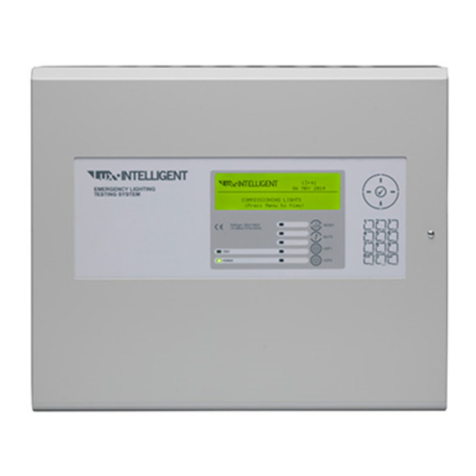
Advanced
Advanced Lux Intelligent LX-9400 User manual

Advanced
Advanced LIFELINE Px-100 User manual
